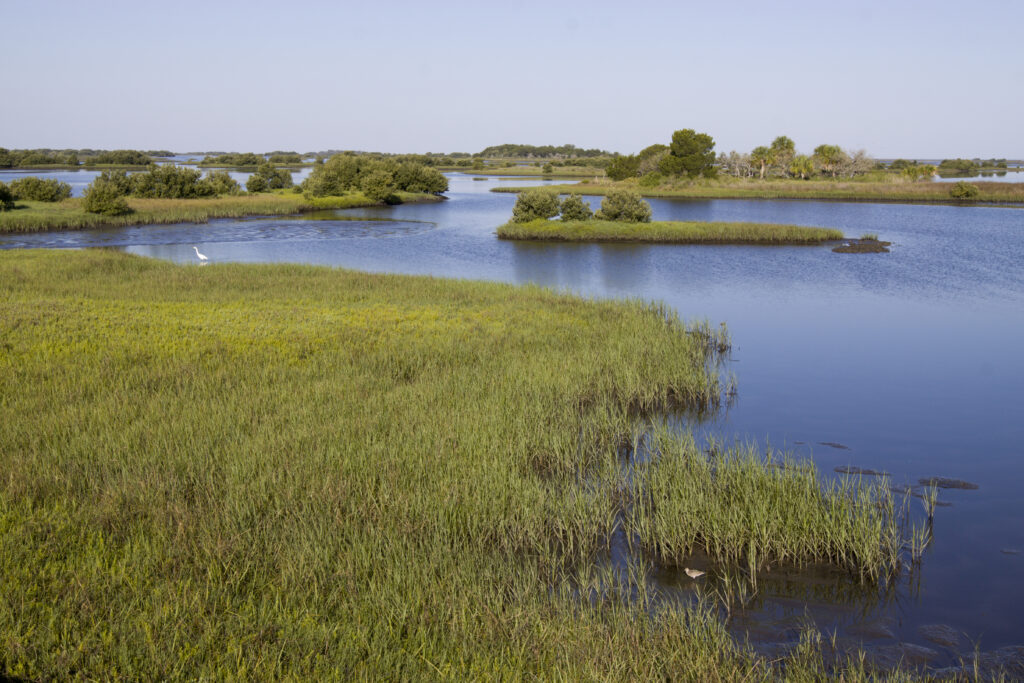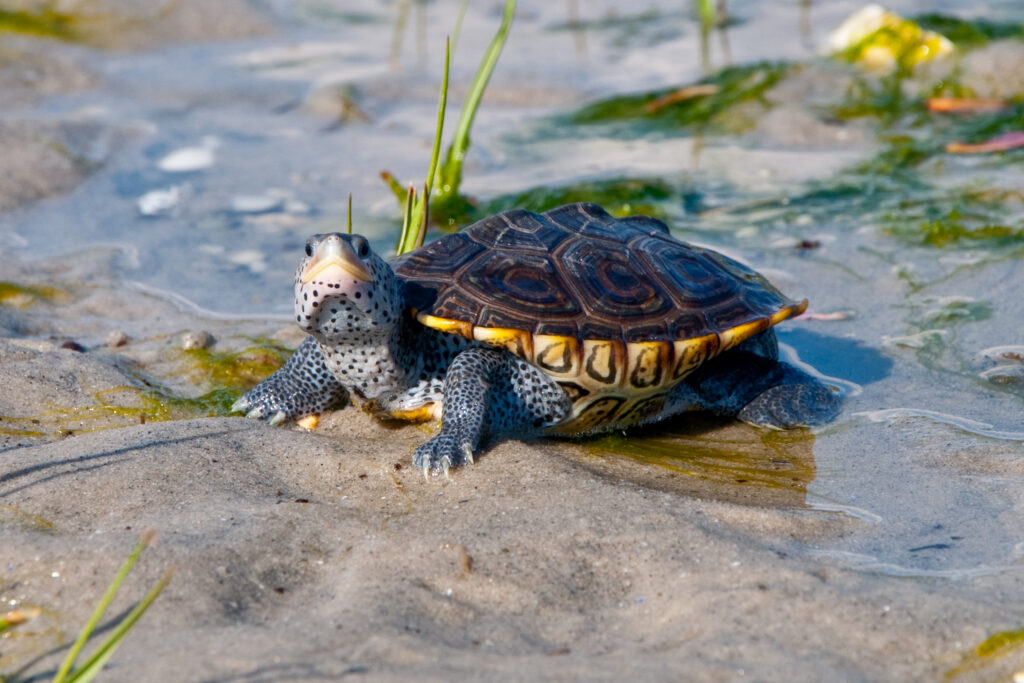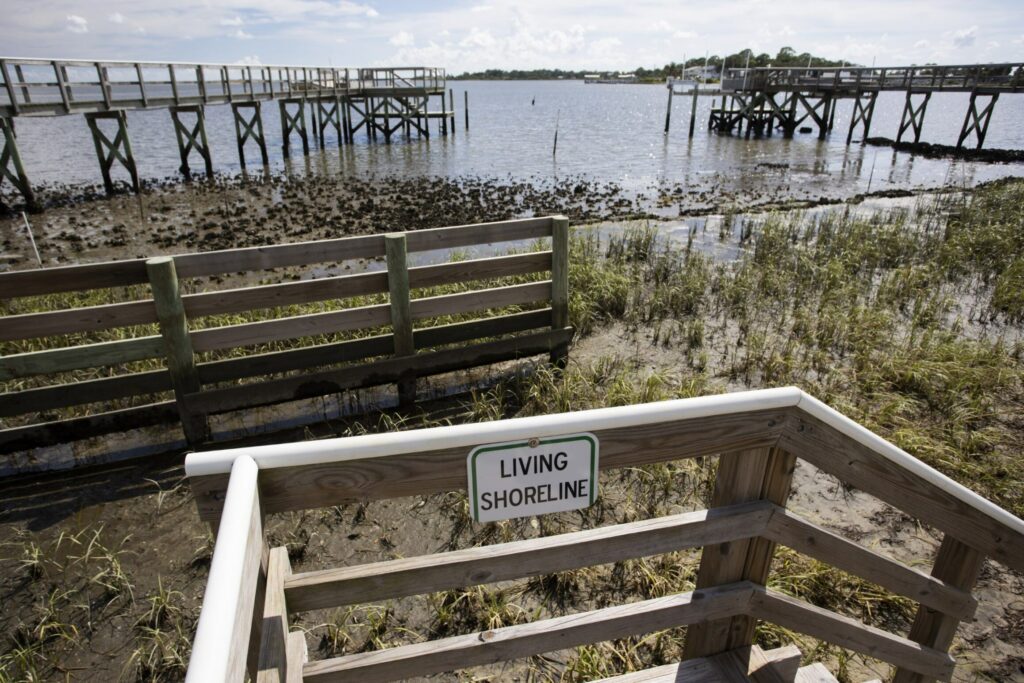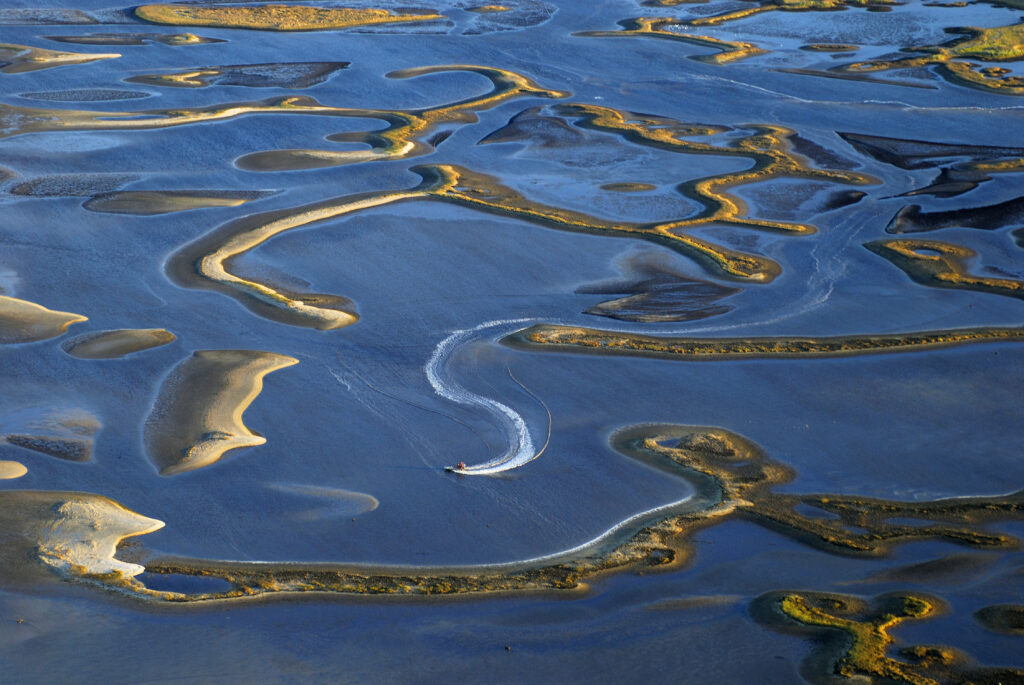
Coastal wetlands in Cedar Key, Florida. Photo by Tyler Jones (UF/IFAS).
Celebrate World Wetlands Day by recognizing the salt marshes in Florida’s Big Bend Region! This global event, observed annually, aims to increase awareness about the vital role of wetlands in maintaining our planet’s health. Additionally, it marks the anniversary of the Convention on Wetlands, established as an international treaty in 1971. Florida’s Big Bend salt marshes play an indispensable role in shaping coastal systems by influencing local economies, biodiversity, water quality, and ecological resilience.
Cultural and Economic Significance
Archaeological discoveries in the Big Bend, including shell middens, ceremonial sites, and various artifacts, unveil a rich history spanning thousands of years, illustrating how indigenous people interacted with salt marshes and other natural systems. Today, local salt marshes continue to be culturally and economically significant, supporting communities reliant on seafood production and ecotourism.
According to Florida Fish and Wildlife Conservation (FWC) and Florida Department of Environmental Protection (FDEP), over 70% of Florida’s most important commercial and recreational fish and shellfish species rely on salt marshes and other estuarine habitat at some point in their life cycle, making protection of coastal wetlands vitally important to the future of Florida’s fisheries.

Diamondback terrapin in wetlands.
Biodiversity
Big Bend salt marshes are dynamic ecosystems characterized by daily flooding from tide cycles and are dominated by salt-tolerant vegetation such as smooth cordgrass, black needle rush, and American glasswort. These marshes serve as crucial breeding, nesting, and foraging grounds for bird species, and act as exceptional nurseries for juvenile fish and other organisms by providing shelter from larger predators.
Notable fauna in these habitats include striped mullet, blue crab, periwinkle snails, Eastern oysters, and keystone species like the diamondback terrapin. Additionally, threatened species, such as the roseate spoonbill, are also present, along with the Florida salt marsh vole—an endangered and geographically restricted species with only two current known populations in the state.
Current Condition
Like all wetland ecosystems, salt marshes in Florida’s Big Bend are negatively impacted by development, effects of climate change, and disturbances in upstream ecosystems that influence water quality, flow, and sediment distribution.
Despite these threats, salt marshes in this region of the state have fared relatively well due to conservation efforts and fewer development impacts, particularly dredging projects. Large land tracts such as St. Marks National Wildlife Refuge, Lower Suwannee National Wildlife Refuge, and Big Bend Seagrasses Aquatic Preserve, are protected by public ownership and safeguard thousands of acres of salt marsh and diverse habitats. Coastal communities like Cedar Key are actively implementing living shorelines to combat erosion and enhance habitats by restoring features of natural marsh communities. The success of regional conservation in the Big Bend serves as an example of how human needs can be balanced with the preservation of vital ecosystems.

Sea Grant living shoreline in Cedar Key, FL. Photo by Tyler Jones (UF/IFAS).
Climate Impact
In addition to conservation efforts, researchers are now investigating how salt marsh communities can adapt to a changing climate and bolster resilience. Threats such as sea level rise and warming temperatures are reshaping the composition of plant and animal species in Florida’s marshes. As sea levels rise, coastal development and infrastructure may prevent the inland migration of marshes, leading to habitat loss through “coastal squeeze.”
Rising temperatures and fewer cold weather events pose another risk, allowing mangrove species to outcompete salt marsh grasses. This shift is observable throughout the state, with mangroves advancing northward beyond the Big Bend and along the Atlantic Coast. Ongoing climate impacts highlight the urgent need for proactive measures to preserve the delicate balance of these ecosystems. Explore more about these initiatives at the UF/IFAS Nature Coast Biological Station.
Water Quality Protection
Salt marshes absorb, filter, and remove pollutants that impact water quality. For example, marshes often intercept nutrients like nitrogen and phosphorus from surface runoff. These nutrients are removed or transformed through a combination of physical, chemical, and biological processes that involve all components of the wetland: soil, plants, microbes, and even animals like fiddler crabs! The breakdown and storage of pollutants in salt marshes improve water quality in nearby marine and estuarine ecosystems, keeping fisheries and other habitats healthy.
Protecting salt marshes and coastal water quality requires local engagement. Residents living near these ecosystems should be aware of regulations influencing their activities, such as vegetative buffer requirements. Being aware of how individual actions can contribute to collective impacts is also critical. Because salt marshes are sensitive to upstream disturbances, residents can protect ecosystem health by curbing behaviors that result in nutrient runoff, pollution, soil erosion, etc. Following best management practices for landscaping and waste disposal ensures that wetlands can continue to function as “nature’s kidneys.”

An airboat navigates the salt marsh and oyster beds at low tide near Cedar Key, Florida. Photo by Carlton Ward Jr.
Local Stewardship
If you want to take an active role in protecting salt marshes, consider volunteering with local restoration or cleanup initiatives such as the International Coastal Cleanup. Locals can also reach out to Citizen Support Organizations (CSOs) for nearby public lands, aquatic preserves, and nature parks, e.g., Friends of St. Marks National Wildlife Refuge in Wakulla County. These groups often have opportunities for involvement in education, restoration, and maintenance of preserves.
It is also incredibly important for people to connect with ecosystems they may be unfamiliar with, as well as the ones they seek to protect. In the Big Bend, there are plenty of public preserves where people can visit and explore salt marshes. The Withlacoochee Gulf Preserve in Yankeetown is a great place to see marshes, tidal creeks, and more—especially from the 30-foot observation tower. The Dennis Creek Trail near Shell Mound in the Lower Suwannee National Wildlife Refuge also offers visitors a short hike with a lot to see. As you cross the boardwalk over the tidal flat, make sure you wave to the fiddler crabs. You might even see them wave back!
About The BLOGGER
Haley Cox is a Coastal Resilience Program Coordinator for Florida Sea Grant and works closely with agents and staff at the UF/IFAS Nature Coast Biological Station in Cedar Key. Haley is responsible for expanding Florida Sea Grant’s capacity to conduct resilience-related extension and education programs along Florida’s Nature Coast and other vulnerable areas of the state.